Dear readers, even if you are not into Japanese animation, you may like Disney’s works. Their new title, Mufasa: The Lion King, came out last December.
This reminded me of other animated lions, and in particular of the long running The Lion King vs. Kimba the White Lion controversy. Disney’s The Lion King was released in 1994 while Osamu Tezuka’s Kimba came out in 1965-66. As you may know, there are many striking similarities between the two. Please read on.
Let’s see if you recognize this story.
There’s a young lion prince who will one day take the throne, but after his father’s early death, the cub is in exile and must return to claim his throne against a black-maned, dark-furred lion with a scar over his left eye, a villain who is helped out by his not-too-bright hyena henchmen. The cast of characters includes a wise baboon who mentors the cub and fights hyenas with a stick; a flighty, easily flustered bird who helps out; a lioness cub who befriends the cub in childhood and becomes his love in adulthood. And don’t forget about that part with the terrible stampede, or the ghostly father appearing in the clouds in sky.
Can you guess the title? The answer should be obvious. I’m talking about Kimba the White Lion, also called Jungle Emperor Leo, depending on the translation. It started as a manga by Tezuka Osamu in 1950, turned into an anime series in 1965, a movie in 1966, and more animated works in the following years.
Now, I bet you thought I was talking about 1994’s The Lion King, right? And indeed, the two works share many similarities.
Similar-Looking Villains with Hyena Henchmen
In fact, a lot of people have been concerned over these similarities, and there has been controversy from the beginning that Disney’s The Lion King stole from Tezuka’s Kimba stories. Disney has repeatedly denied the accusations, often with hostility,
such as claiming that people at Disney didn’t know about Kimba.
They point out that Simba is Swahili for “lion,” so that’s a logical name for a lion, and not a copy of Kimba. They say it wouldn’t be weird for other African animals like a baboon be in a movie about Africa.
However, to the last point, critics would point out it’s not so much that it’s the same animals, it’s that some of the Disney animal species have the same basic personalities and functions as the exact same animal species have in Kimba. To add insult to injury, Disney has repeatedly referred to The Lion King as an “original work” as opposed to a movie based on a fairy tale or book, like previous Disney movies.
Mentor Baboon Who Fights with a Stick
There are only so many stories in the world, so it’s natural that some stories will have overlaps and coincidences. It’s also true that The Lion King and Kimba have a number of significant differences, like the fact that Kimba has to deal with humans and poachers (something never touched in The Lion King) and Claw, the villainous lion, is not Kimba’s uncle the way Scar is Simba’s uncle.
Frederik Schodt, who was Tezuka’s translator and a friend of his, had journalists reaching out to him in 1994 when the controversy first erupted. Tezuka had died in 1989 and couldn’t speak on his own behalf.
“The uproar started out in the fan community when they saw these similarities, and the media gradually picked it up,” Schodt said.
Clinging to a Tree in a Stampede
“There were some similarities that were so obvious,” he continued. “One of the reasons I think it became such a controversial issue in the fan community, and in Japan as well, is because the Disney people came out with these blanket statements saying no one in their production crew knew anything and no one had heard about The Jungle Emperor or Kimba the White Lion. There were blanket statements that none of the animators knew anything about it or had heard about it or knew of Tezuka. If you know anything about animation and how it works, [then you know Disney’s statements] were totally preposterous.”
Explaining what he means by that, Schodt said, “From my exposure from touring a variety of animation studios, I’m sure if you’re given an assignment to draw a story about lions in Africa in an anthropomorphized story, the first thing you’re going to do is look at every animation that’s ever been created about lions. You’re going to look at how to draw them. You’re going to look at other works that will help you figure out how to draw lions, especially in a certain way. The idea that no one was even aware of Tezuka was also preposterous. Even if the animators were too young to have watched Jungle Emperor or Kimba the White Lion when it was first broadcast on TV [in America], it was broadcast on reruns for many years. They would have heard about it.”
Father Lion Appearing in the Clouds
Schodt said that many people in Japan took Disney’s denial as “quite an insult.” He continued, “There was a letter of protest that was put together by Satonaka Machiko, who is a professional, well-known manga artist. I think there were more than 200 people who signed this protest letter. It was sent to Buena Vista, the distribution arm of Disney Japan, and the people who were responsible for distributing The Lion King, especially overseas.”
But, as Schodt points out, eventually the news articles died away. There was also never a lawsuit from Tezuka Productions.
“From an American perspective, it’s like, ‘What? There’s no lawsuit? What’s wrong? Why would you not file a lawsuit?’” Schodt said.
He then explained a cultural difference between America and Japan when it comes to lawsuits. “In Japanese culture — at the time at least — filing lawsuits was not regarded as the honorable thing to do. It doesn’t have the popularity it has in the United States. So it was not something they wanted to do.”
Kimba Producer Fred Ladd on Seeing The Lion King
Even if there had been a lawsuit, no one was naive enough to think the players were on an even playing field.
“Everybody knows that Disney has been at times ruthless with anything to do with legal issues. Even in Japan people are very aware of that,” Schodt said.
Part of the irony is that Tezuka himself was a big fan of Walt Disney and his work. Schodt said he thinks that, in a way, that Tezuka would have been flattered to have been copied by the company he had admired in his life. At the same time, Schodt said, “Of course, he would have wanted some mention.”
Schodt, like many fans, thinks that Disney ought to give Tezuka the credit they feel he deserves.
“Disney ought to acknowledge that of course there were people on the staff who had seen Jungle Emperor or knew of Tezuka,” he said. “I think it would be nice to just have a line in there, someplace in the credits, that the production staff would like to acknowledge some inspiration from Osamu Tezuka. That would have been an appropriate thing to do. In Japan, people would have just loved to see an acknowledgment.”

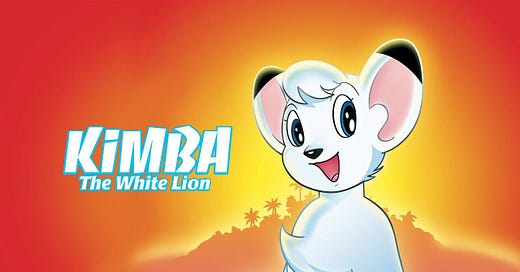



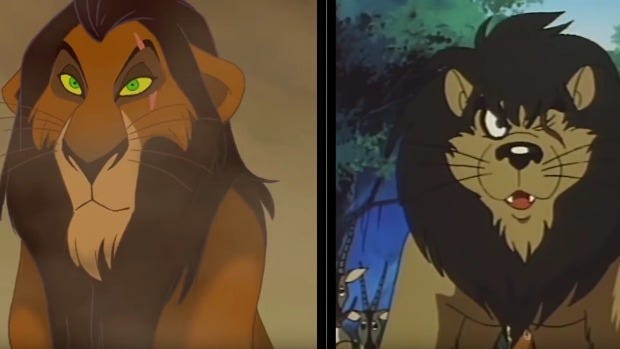
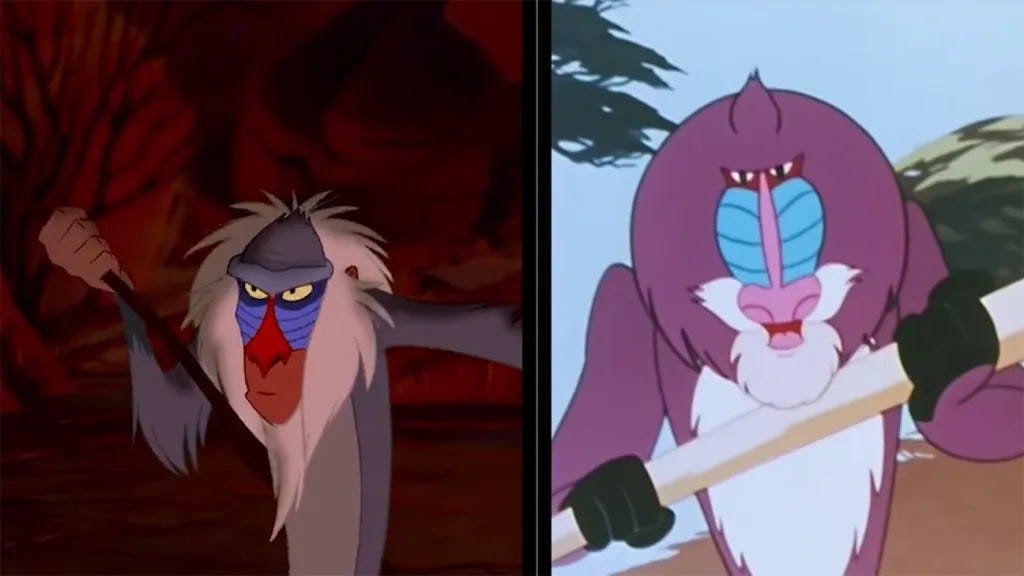
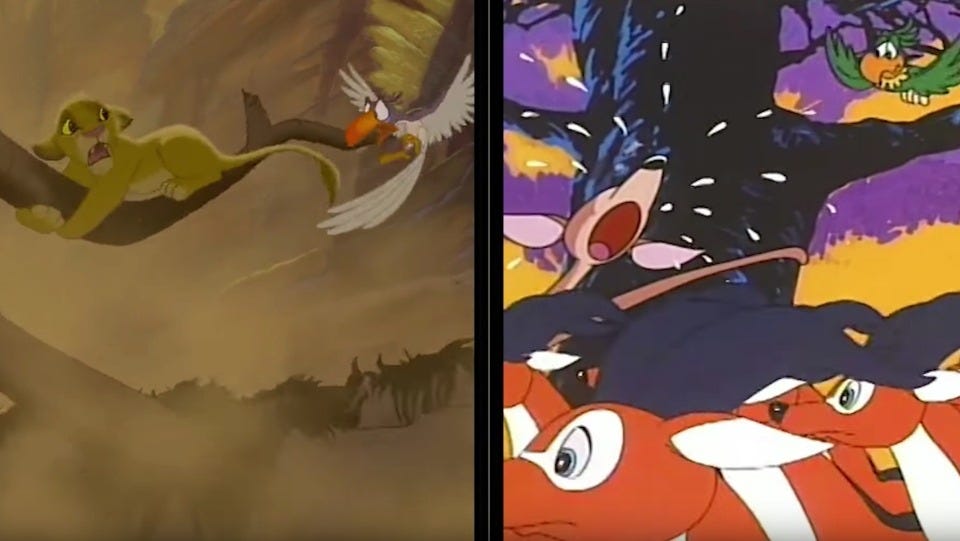
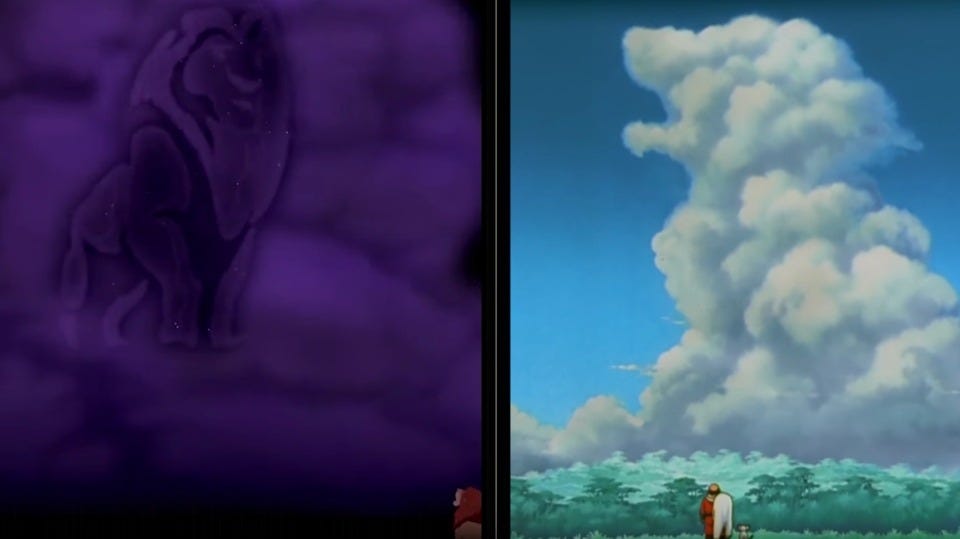
I haven’t been a fan of Disney post-Walt, and this is one more reason why. Interesting post; thank you.
This is such an interesting post, Gianni, and I believe it's an old story where the big fish (Disney) are arrogant and powerful enough to steel from the little fish (animae) because they can.